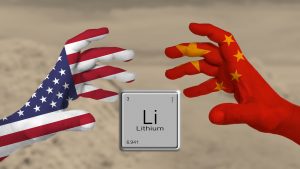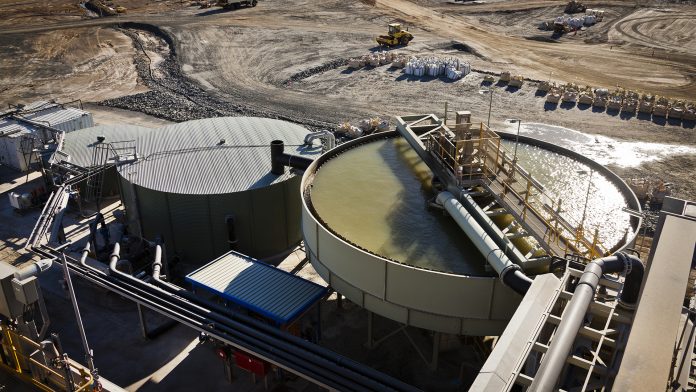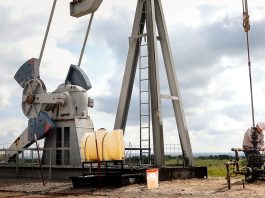David Merriman, Research Director at Project Blue, provides expert insights into global lithium supply chain dynamics.
It is no secret that the transition towards greater renewable energy generation, increased energy storage and growing sales of electric transportation is fundamentally changing the markets for several critical raw materials, including the international lithium supply chain.
The lithium market has been at the forefront of this electrified charge, transforming over the past 20 years from a relatively low-volume, low-value industry into a hotbed of project development, expansions, and policy changes, all accompanied by volatile pricing movements.
Downstream integrations in the Australian lithium industry
The surge of newly commissioned capacity in recent years has changed the lithium supply chain structure, particularly regarding the production of lithium mineral concentrates and the conversion of this mineral into lithium compounds.
Two main trends are ongoing in the lithium mineral concentrate industry, the first being the integration between mineral concentrate producers and mineral converters in Australia and the second being the increasing geographical diversification of lithium mineral concentrate production.
Since the late 2010s, major producers such as Tianqi Lithium, Albemarle and SQM have invested heavily in constructing, and in Tianqi’s case commissioning, lithium hydroxide production capacity in Western Australia, close to the production of mineral concentrates from their respective operations.
Downstream integration was seen as a way to improve ‘added value’ to lithium products, reduce transportation costs, and gain closer involvement with the high growth and increasingly global Li-ion cathode active material (CAM) market.
Major lithium concentrate producer Pilbara Minerals (Pilbara) is also developing downstream processing capacity in South Korea with POSCO, along with investigating refining to midstream lithium compounds in Australia through a JV agreement with Calix.
Other lithium mineral producers are expected to take steps towards integrating lithium mineral concentrate production and lithium refining in Australia. Challenges remain, however, with capital requirements, labour and equipment availability and stable access to reagents such as sulphuric acid in Western Australia.
These challenges could lead to more international integration between Australian spodumene producers and downstream conversion facilities, similar to the relationship between Pilbara and POSCO.
Third-party processors look for alternatives
Increasing integration to produce refined lithium compounds has seen third-party processors, particularly in China, seek alternative feedstock sources to continue operations. Reduced third-party lithium supply has been a catalyst in developing Chinese domestic lithium operations, such as those targeting lepidolite mineralisation.

The rapid rise in lepidolite mining and processing in China linked to increased prices during late 2022 and into 2023 showed that China could quickly bring on significant volumes of lithium mineral concentrate production, though the higher cost of production required elevated lithium prices to sustain output.
Lepidolite production was not only limited to Chinese producers, with operations exporting lepidolite concentrates and direct shipping ores from various sources in Africa for processing in the Chinese domestic industry. As lithium spot prices fell in 2023, operational closures and a rapid move to better licence the production of lepidolite concentrates in China have seen production volumes quickly decline.
Despite this recent decrease in output, particularly linked to the closures of smaller semi-artisanal operations, lepidolite is expected to form an important source of feedstock, particularly to the Chinese industry, given its ability to reduce China’s reliance on imported feedstocks.
Establishing a lithium supply chain by Chinese mineral processors and refiners is not a new development. In recent years, several Chinese companies have acquired or invested in multiple operations in African nations, particularly in Zimbabwe, with multiple lithium operations, including; Bikita, Arcadia, Kamativi and Sabi Star being purchased.
The shipment of spodumene, lepidolite and petalite ores to the Chinese market from Zimbabwe will remain a vital raw materials source over the long term, though pressure from the Zimbabwean government to require additional domestic processing prior to export could disrupt the current status quo.
Securing a lithium supply chain for the long term is key to allowing unrestricted growth in China’s domestic mineral conversion industry which is forecast to require over 1.0Mt LCE in mineral concentrates by 2033 based on currently announced mineral conversion operations and domestic industrial demand.
The growing supply of third-party spodumene in 2023 from operations in Brazil, Australia and Zimbabwe, combined with weakened downstream demand growth in early 2023, has improved short-term market availability for spodumene concentrates. However, further sources of mineral concentrates will be required to keep pace with demand longer term. Lithium in mineral concentrate demand is forecast to approach 1.6Mt LCE globally by 2030, roughly double that produced in 2022.
Impacts of South American nationalisation
While lithium mineral concentrate production and conversion has been dominated by Australia and China, Chile and Argentina have held the top positions in the production of lithium brines for decades.
While the lithium industry in Argentina remains open to the market with typical royalties and local permitting required to be met, the Chilean government has restricted the development of lithium assets in Chile. SQM and Albemarle in Chile produce lithium independently, under licences assigned by the Chilean government. Chile now intends to take majority ownership of lithium production in the country.
Nationalisation of lithium production is nothing new to the industry, with Bolivia developing lithium resources through state-owned Yacimientos de Litio Bolivianos (YLB) and Mexico passing a law in April 2022 declaring all lithium deposits in the country to be state-owned and managed by LitioMex. The scale of Chilean production, however, makes Chile’s move more significant, with Chile accounting for roughly 30% of global refined lithium production in 2022.
As a major supplier of lithium compounds to the European, Chinese, Japanese and North American markets, governmental control could see future lithium supply chain agreements influenced by geopolitical pressures and relationships, particularly if supply availability enters a significant deficit.
OEMs becoming involved in upstream markets
Ensuring long-term access to critical raw materials has now risen to the highest levels of government chambers and industry board rooms, supported by projections of looming shortages by market analysts.
The direct involvement of automotive manufacturers in lithium projects, such as General Motors’ investment in Lithium Americas and Stellantis’ investment in Vulcan Energy, combined with manufacturers like Tesla becoming directly involved in lithium refining, all point toward the closer relationship OEMs have to take with their raw material supply chains.
Offtake agreements signed between lithium producers and downstream industry participants such as battery manufacturers and automotive OEMs have become commonplace, a far cry from the stand-off approach most automotive manufacturers displayed before 2020.

The number and volumes of offtake agreements have also increased significantly since 2020, with the offtake agreement between Ford Motors and Albemarle signed in mid-2023 equating to over 100kt lithium hydroxide (88.0kt LCE) over a five-year period.
Larger offtake agreements, equity purchases and construction of processing capacity are expected to become increasingly common over the coming decade as manufacturers scramble to access raw materials. In addition to the direct necessity by downstream purchasers to secure materials, offtakes are equally important for new project development and reducing risk for potential financial investors, ensuring the continued development of new lithium projects globally.
Government-supported reshoring of capacity
While the automotive and Li-ion battery markets are global entities, the lithium supply chain feeding these industries has become increasingly polarised due to government legislation in key regions. Government subsidies for EVs have long been a part of fuelling the growth in lithium demand from automotive applications.
Though more recently, the announcement of the Inflation Reduction Act (IRA) in the USA and the Critical Raw Materials Act/Green Deal in the EU have looked to entice Li-ion manufacturers and their raw material supply chains to build capacity within their respective regions or within ‘allied nations’.

The IRA and Critical Raw Materials Act/Green Deal are both clearly targeted at reducing supply chain dependence on the Chinese market for various raw materials and downstream Li-ion components, creating divergent markets for IRA/Green Deal-compliant materials and materials which will be consumed by the currently dominant Asian market.
Since its announcement in mid-2022, the IRA has seen a flood of investment into the US battery and battery raw material industries, including lithium. In addition, countries and governing bodies such as the EU, Canada, Australia and the UK have been ensuring they comply with IRA rules, effectively opening up their domestic raw material and battery component industries to the growing US market.
The incentives laid out in the IRA will continue to see the build-out of a robust US-based battery and EV manufacturing industry. However, the USA will remain reliant upon lithium imports to meet the required demand volumes until 2030. The European Union’s Critical Raw Materials Act/Green Deal is expected to have a lesser impact than the IRA as there is no direct tax credit made available for reshoring capacity. OEMs will likely take steps to maintain access to the European market via minimum domestic sourcing and recycling commitments.
Future lithium supply chain outlook
Overall, global lithium supply chain dynamics remain in flux, with increasing regionalisation of consuming markets being met with an increasingly geographically diverse supply of lithium mineral concentrates and refined lithium products.
Supply chain integration is expected to continue at new lithium mineral operations, requiring third-party lithium processors to build diverse upstream feedstock sources to mitigate supply availability risks. Production in certain jurisdictions will increasingly target particular markets to access financial benefits or gain premiums based on environmental criteria.
With lithium supply forecast to become increasingly tight towards the end of the decade, however, geopolitical pressure on ensuring supply from key trade partners will likely become fiercer, which will only be amplified by greater state involvement in the lithium supply chain.










